#Vivienne Westwood AW 1990
Text
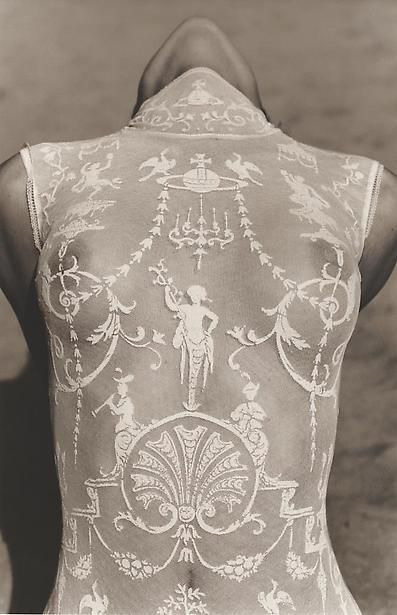
Vivienne Westwood: AW 1990 Portrait Collection Boulle Print Mesh Foil Crushed Velvet Bodysuit.
2K notes
·
View notes
Photo

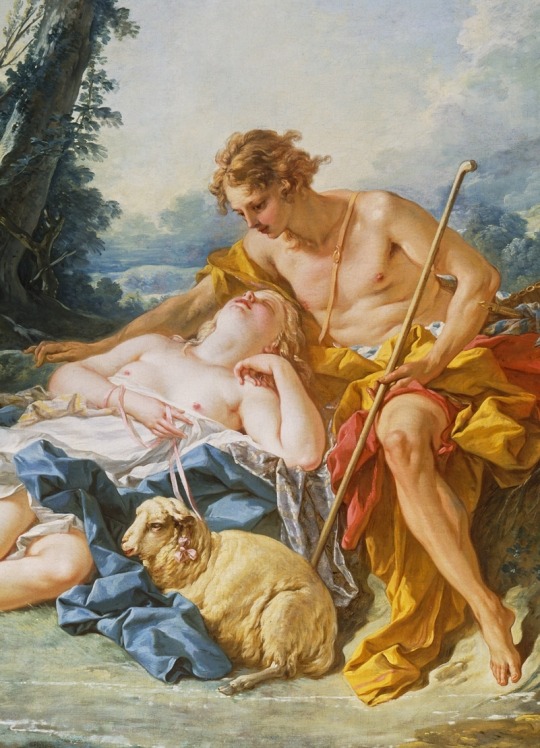

Corset from the “Portrait” Collection & Jeans from the “Cut & Slash” Collection
Vivienne Westwood
Fall/Winter 1991 & Spring/Summer 1991
At the time of this acquisition, Vivienne Westwood is regarded as the doyenne of British fashion. Controversial, acclaimed, eccentric, classic, punk, confronting and essentially British all describe Westwood's work. Opening a shop at 430 King's Road Chelsea, London with then partner Malcolm McClaren in 1971, Westwood sold her own designs through this shop, later called the World's End. Her early work of the 1970s harked back to fifties classic fashion at a time when hippy ideas were dominating fashion. Her work became increasingly associated with and inspired by the punk movement, epitomised by her relationship, through McClaren, with the punk rockers, the Sex Pistols, who first performed in 1976. She became their costume designer. Gene Krell describes Westwood as 'punk's prototype and greatest showpiece.' After punk, her interests became more historical, adapting and reinterpreting materials and designs into her own style.
The corset was designed for her Portrait collection AW 1991. Westwood's revival of the corset ws one of her most important fashion ideas of the 1990s. Her corsets were modelled on the 18th century style, flattening and raising the bosom. The corset is photographically printed with a detail from Boucher's 'Daphnis and Chloe (Shepherd watching a sleeping shepherdess, 1743-5)' in the Wallace Collection, London.
The jeans with detachable satin codpiece come from Westwood's Cut and Slash collection, Spring Summer 1990-1991. With this collection, Westwood explored clothing that was androgynous. Inspired by historical portraits of men in slashed costume wearing codpieces, Westwood employed the 17th century technique of slashing she had studied at the V and A. Westwood slashed demin, cotton, satin and silk for the collection and achieved the effect in various ways: the large slashes were hand-cut while the smaller, regular cuts were made using a broderie anglais programme in which embroidered sections were cut, but the embroidery itself was omitted. The jeans with detachable codpiece were worn by the donor with a Westwood corset.
Her style is individualistic and can push the boundaries of acceptability. While her range is extremely wide, her clothes bear her signature emphasis on intricate craftsmanship. Her work draws from a wide range of influences, particularly historical periods and collections, like the Wallace Collection. In 2004, the Victoria and Albert Museum held a major retrospective of her work. Each collection has a theme and title. She produces a range of collections twice a year, currently: gold label, red label, man and anglomania. Her range of accessories is extensive: bags, women's and men's shoes, jewellery and two lines of perfumes (Boudoir and Libertine). Her works promote a sumptuous and glamorous yet rebellious and challenging take on British identity, gender and politics. She said 'I am English, and I parody the English, with the hope that my clothing will have a international significance.'
Powerhouse Museum (Object No. 2006/96/12 & Object No.2006/96/7)
#corset#vivienne westwood#1990s#fashion history#vintage fashion#20th century#1991#fall#winter#spring#summer#art#art history#denim#cotton#lycra#england#powerhouse museum
217 notes
·
View notes
Text
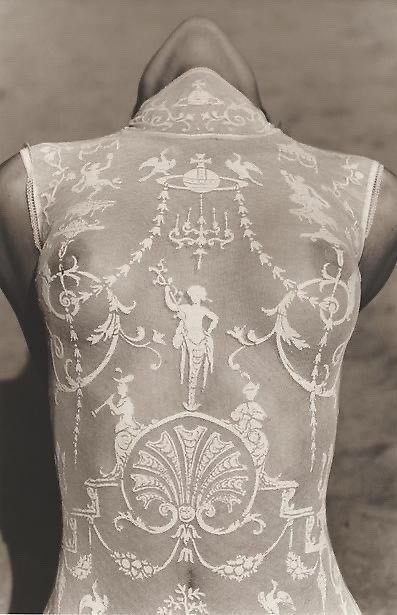
Vivienne Westwood: AW 1990 Portrait Collection Boulle Print Mesh Foil Crushed Velvet Bodysuit
15 notes
·
View notes
Photo

Vivienne Westwood: AW 1990 Portrait Collection Boulle Print Mesh Foil Crushed Velvet Bodysuit.
7 notes
·
View notes
Text
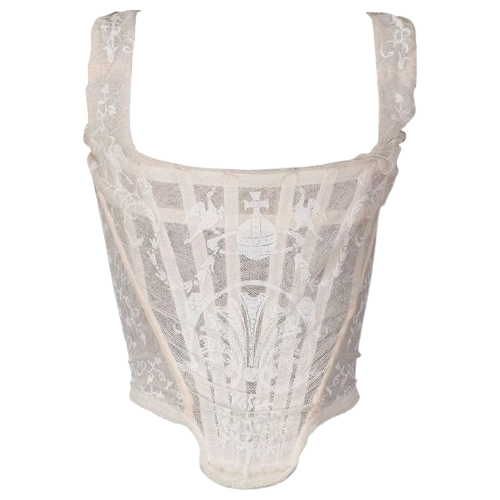
Vivienne Westwood ‘Portrait Collection’ (aw 1990) corsets: ivory net corset
0 notes
Photo

Vivienne Westwood Fall Winter 1995 Show.
#Vivienne Westwood#fashion#fashion show#Fashion Week#aw 1995#model#style#catwalk show#fashion presentation#fashion photography#1990s#1990s style#1990s fashion
61 notes
·
View notes
Photo
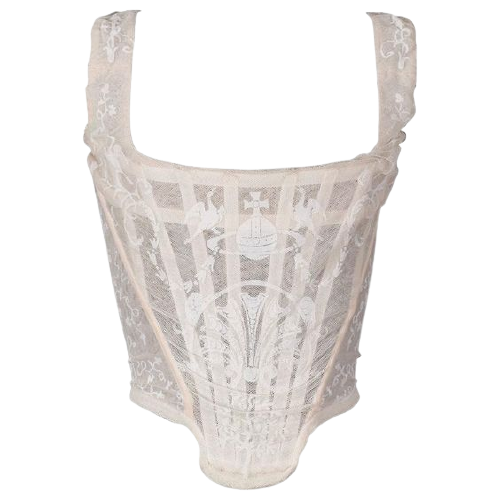


Vivienne Westwood ‘Portrait Collection’ (aw 1990) corsets: ivory net corset // black satin corset with metallic gold applied decoration of classical figures and motifs // Boucher corset (Shepherd watching a sleeping shepherdess (1743‑1745))
#vivienne westwood#vw#1990#90s#fashion#vintage#vintage fashion#corset#ethereal#dreamy#white#couture#aesthetic#renaissance painting#baroque#gold#black and gold#royalty core#versailles#cottagecore#fairycore#queen#luxury#portrait#portrait collection#bustier#rare find#inspiration#inspirational#art
5K notes
·
View notes
Text

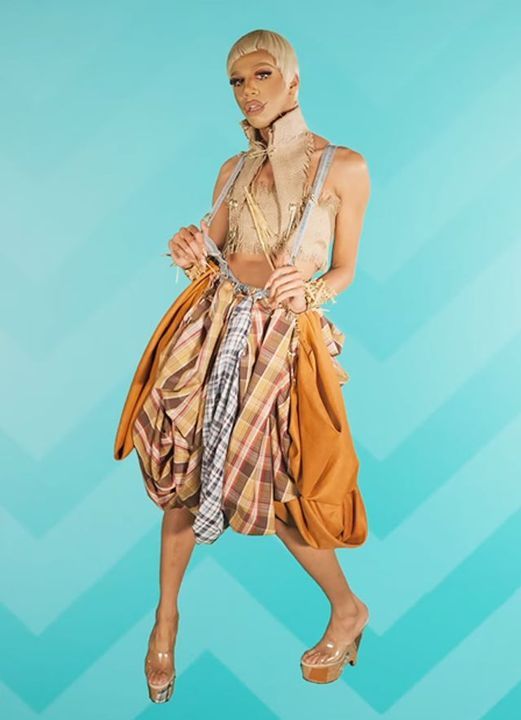
Back in the 90`s
Escrito por: Diana Galindo
Los noventas una época de grandes cambios para la humanidad. La guerra fría llega a su final. Se da la caída del muro de Berlín. Se encuentran los restos de Ernesto el Che Guevara. La muerte de Lady Di. El asesinato de Giani Versace. Nirvana alcanzaba su máximo auge. Se estrena el primer sencillo de Britney Spears “Baby one more time”. En el mundo de la moda se posicionaba la tendencia grunge con base en el movimiento musical implementado por bandas como Nirvana y Pearl Jam. Este consistía en imitar el estilo de las bandas de rock más importantes la época; retomando la apariencia desalineada, construyéndose a partir de los referentes punk y rock expuestos en los años 70’s.
La creadora de la estética punk Vivienne Westwood recupero el tartán (tela a cuadros) como forma de activismo y representando la represión escocesa por parte de la monarquía británica, estampado que luego se convertiría en uno de los mayores iconos utilizados en la tendencia grunge; junto a los trajes con silueta sobredimensionada, los accesorios metálicos y el predominante color negro en las prendas de cuero, características que son llevadas a las pasarelas por Anna Sui, Christian Francis y Marc Jacobs.
El concepto utilizado por Weswood se ha mantenido hasta el punto de trascender a diversos espacios de entretenimiento tales como la televisión, evidenciado en el popular reality show Ru Paul Drag Race y puesto en escena por Naomi Smalls, participante de la temporada 8 en el reto magas del drag llevada a cabo en el año 2016. El reto consistía en representar a un personaje de la famosa película el maravilloso mundo del mago de oz, la figura designada a Naomi fue el espantapájaros; para ello Smalls decidió optar por una silueta ajustada en el pecho que se amplía desde la cintura, compuesta por un conjunto de crop top confeccionado en fibra de fique, una falda con diferentes tipos de tartán y un calzado similar al diseñado por Vivienne Westwood para su colección “Anglomanía” AW 1990/91. La combinación de las texturas, estampados, colores y técnicas son una clara alusión a la estética grunge retomando los principales pilares que constituyeron este movimiento.
Ejemplos como este muestran la incidencia de la cultura drag en la moda y viceversa estableciendo un vínculo de alimentación mutua que pasa desde la toma de referencias hasta la clara trasmisión de una postura y una experiencia en el mundo por medio de la estética.
6 notes
·
View notes
Text
Celebrity power:
Celebrities have a huge impact on fashion trends mainly because of the number of followers on their social media platform, and these followers desire to look and dress like them. Films, Music videos and what celebrities are currently wearing also have an impact of current trends.
When you think back to trends like the hippie style in 1967 and early 70’s you are also reminded of the music genre such as Jimi Hendrix’s and the impact he had on that style. This is because artist had a massive influence on the clothes people wanted to buy. This applies to every generation like the Rock N Roll time when artist such as The Beatles and The Rolling Stones.
Also, film actors and actresses such as Audrey Hepburn made pieces of clothing such as the little black dress so iconic and a statement piece that is said to be needed in every woman’s wardrobe and Marilyn Monroe to only inspired women to embrace their size as she was classed as a larger model, she was also the face of Coco Chanel’s perfume.
Princess Diana was a fashion Icon to not only England but maybe the world. Fashion designers constantly wanted to see what she would wear as they knew she would be on the front cover of most magazines. They wanted to create clothes similar to what she was wearing as they knew this is what the public and especially middle-aged women would want to aspire to dress like.
The same goes for the Kardashians. There is an awful lot of girls and women out there that inspire to look like these women. This gives them the power to influence trends and even promote their own brands.
This is known as the trickle-down theory. As celebrities or people with power and money can explore the latest styles which is then adopted by their followers that what to copy their style. People like Kim Kardashian and Kylie Jenner have millions of followers and its these people what will buy the product that they are wearing/ promoting.
But not all celebrities are trend setters, it depends on people’s perception of style and fashion is and can even be affected by that person’s environment and culture.
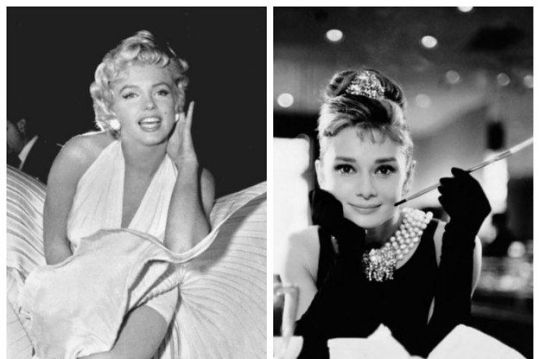
Buzzfeed (November 18, 2014)
Available at: https://www.buzzfeed.com/immortalmarilyn/marilyn-monroe-vs-audrey-hepburnknock-it-off-12dgq?utm_term=.mr9rNrrq8w#.wgPplppKjV
Accessed: December 18, 2020

S.Cannon ( November 15, 2020 11:55am)
Available at: https://nypost.com/2020/11/15/princess-dianas-royal-fashion-on-the-crown-how-to-get-the-look/
Accessed: December 18th, 2020
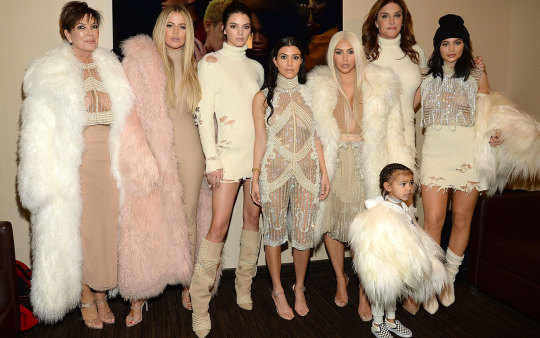
D. Jordan (April 5, 2019)
Available at: https://www.bbc.co.uk/news/business-47793131
Accessed: December 18, 2020
Subcultures:
Fashion subcultures are groups based up on certain features of costume or appearance that make them distinctive enough to be recognised as a subset or wider culture and can show a particular age span, gender, social class, or ethnic identity. I think the music was a big part of subcultures as the fans would replicate what the performers wear. Subcultures have influenced trends by using a bubble-up theory: street culture fashion and consumerism inspires the designers and the trend predictions.
Teddy boys were the first young generation in the 1950’s to create their own style and make it acceptable to dress up. They would wear tapered trousers, long jackets, and fancy waistcoats. Celine A/W 19 collection depicted this very well. The roots of the Teddy Boy lie much in the rebellious attitude of early Rock and Roll music.
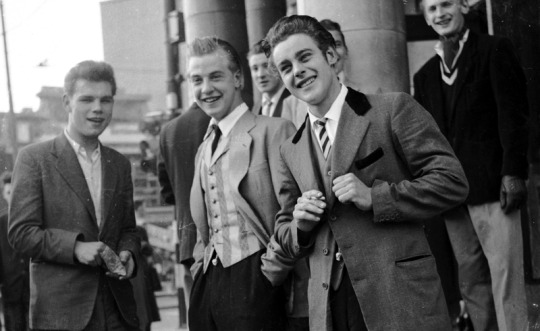
Teddy Boys (Date Unknown)
(Online image) Available at: https://nostalgiacentral.com/pop-culture/fads/teddy-boys-2/
Accessed: December 18, 2020
In the 1960’s the modernist had a big impact on fashion and music. The key fashion staples included tailored suits, soul and R&B music and motor scooters. This period was known as the swinging 60’s all around the world. This decade introduced hot pants, coloured tights, miniskirts, and plastic macs became iconic Designers such as Chanel SS20, Louis Vuitton SS13 and Saint Laurent SS19 have all done similar pieces in bright vibrant colours that really resemble the 60’s fashion.
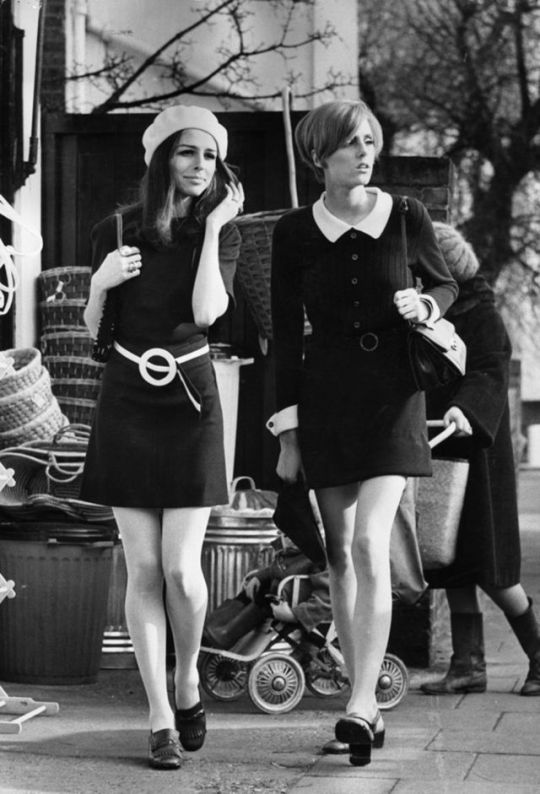
MOD: Fashion Characteristic of British Young People in the 1960s (July 10, 2016)
(Online Image) Available at: https://www.vintag.es/2016/07/mod-fashion-characteristic-of-british.html
Accessed: December 18, 2020
In the 1970’s punk subcultures centred on punk rock music. The music had a big impact on subculture as people were taking inspiration from the punk rock artist and the way the music made you feel. The punk look is one of the most recognisable styles as the ripped clothes, big colourful hair, platform boots and accessories like safety pins are so iconic.

D. McCullin, Untitled, (Punk), 1980s (Date Unknown)
(Online Image) Available at: https://www.artsy.net/artwork/don-mccullin-untitled-punk
Accessed: December 18, 2020
The 1980’s were known for their bold styles, colours and silhouettes and not forgetting the permed hair, it was one of the most electric decades in fashion with trends spanning from biker jackets, ripped tights, oversized blazers. Pop stars such as Madonna and film actresses like Sarah Jessica parker did have an impact on the fashion industry as there fans wanted to dress similar so the clothing they would wear in the movies and in the music videos, the style would often be replicated for the consumers to buy.

A. Bannerman (April 2, 2020)
(Online image) Available at: https://www.cosmopolitan.com/uk/fashion/style/g31928768/80s-fashion/
Accessed: December 18, 2020
Style tribes:
Style tribes are a group of people joined by a distinctive look. Style tribes can influence and spread the perception of new fashion looks. An example of a style tribe is the “Essex look” when you hear this you think of fake tan, big eyelashes, large hair and small dresses and heels. This is a style tribe. Another is the “Hippie” look. When hearing this you generally think of colourful tie dye flowing materials and flower headbands.
There are so many different style tribes and recognisable looks all around the world.

(Left) A. Ingram (November 20, 2020)
(Online image) Available at: https://www.essexlive.news/news/essex-news/essex-school-towie-star-amy-4721712
Accessed: December 18, 2020

(Right) Saved by: M. Morgan (Pinterest)
(Online image) Available at: https://www.pinterest.co.uk/pin/789607747142634680/
Accessed: December 18, 2020
Social media:
The younger generation are always on social media and are constantly seeing pictures of celebrities that have the most influence on fashion trends today. People born between 1990 and the 2000s are known as generation Zen (Gen Z) these people are known for using the internet from a young age and are comfortable with social media and technology. Gen Z Is the rise of the bloggers.
Also, platforms like Tik Tok have a huge influence on music trends.
A fashion blogger is someone who will write an online magazine or blog using the power of social media to be able to identify the latest trends. They identify what is out there and what is happening.
A fashion Influencer is somebody that has a large number of followers and these followers desire to look, and dress like them. They want to duplicate the look and influencers and the power to influence people’s opinions on what to buy. Brands endorse them to attend fashion shows, parties, dinners and more and to wear their clothes on social media to help expand their brand. Take kylie Jenner for example she has 210 million followers. If she posts a picture in a certain dress or shoes her followers would most likely want similar aesthetics so will go out and purchases similar items. She also used this platform to promote her makeup and skin care line for free. Whereas people like Holly May Murphy (the fashion blogger) they use this platform to not only record current trends, but she creates videos to help people style clothes and gives advice and information on different things like skin care and how to style chunky boots etc.
Brand slaves are people that feel they need designer labels to fit in and be recognised by their peers. They want to buy these expensive things so they can post it on social media.
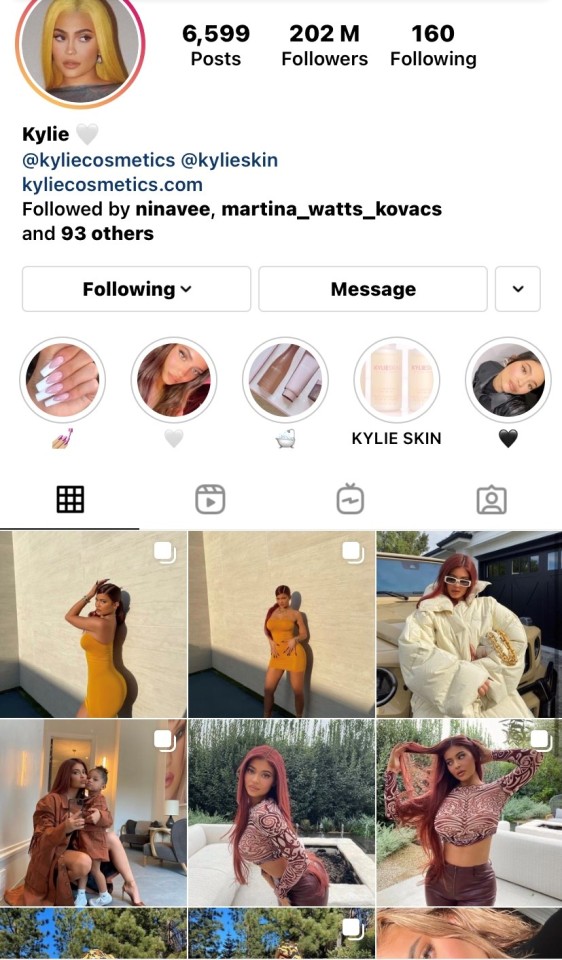
(Left) Available on: Instagram: @kyliejenner
Accessed: December 18, 2020

(Right) Available on: Instagram: @the_fashion.blogger
Accessed: December 18, 2020
Global issues:
Now the world is experiencing a worldwide virus and lockdown the fashion industry is truly changing. The human impact gives a new perspective on consumption habits. Fashion trends are now focusing on comfort as it knows most people will now be having to stay at home and if they want their clothes to stay relevant, they need to develop them to the consumer’s needs. Also, global warming has had an impact on the fashion industry, with some designer using animal friendly materials and fabrics to connect to their narrative, which is to save the planet.
“Most believe that Covid-19 has validated their predictions that the fashion industry needs to slow down, and fashion brands need to have more of an individual voice.” Vogue 2020

Tobi Akingbade (Sunday 17 Feb) 2019 8:47 pm
Available at: https://metro.co.uk/2019/02/17/rose-mcgowan-struts-political-clothes-vivienne-westwood-london-fashion-week-8650597/
Read more: https://metro.co.uk/2019/02/17/rose-mcgowan-struts-political-clothes-vivienne-westwood-london-fashion-week-8650597/?ito=cbshare
Twitter: https://twitter.com/MetroUK | Facebook: https://www.facebook.com/MetroUK/
1 note
·
View note
Text

This is the look that has been chosen for me to research from the AW Vivienne Westwood portrait collection.
The ruling theme of the 1990s was historicism.
The most characteristic aspect of Westwood's work in the 1990s is its historicism. Her revelation is that fashion is extremely improved by renewal and reinvention, and she believes this to be a radical departure. She once said: 'I am a great believer in copying; there has never been an age in which people have so little respect for the past'.
With this look I think Vivienne used irony in terms of where she took her inspiration from, this is because she was inspired by the 18th century where woman would not be able to dress in the way Vivienne has dressed her models.
0 notes
Text
If the catwalk collections for Autumn/Winter 2018 truly herald next season’s styles, we are all likely to be wearing face masks or head coverings come Christmas. In a series of shows, from Erdem and Richard Quinn, to Standish KA WA KEY, designers conjured with clothing as a form of disguise and camouflage to a degree that I have not noticed in recent years.[1] Working on a book about the history of fancy dress costume, this theme immediately stood out and made me think: what is it about the mask that makes it seem so relevant and appropriate right now?
Much of the immediate commentary on the catwalk collections for Autumn/Winter 2018 focused on the apparent conservatism of the designers’ creativity. A convenient explanation for the (relative) lack of exuberance and joie de vivre was the pervasive feeling of ennui that we all seem to feel, as reports on conservation, humanitarian, economic and political crisis recur throughout global news cycles. In some cases, designers acknowledged the malaise and angst as a creative spur for their sartorial outlook. In his last show for Burberry, Christopher Bailey focused on ‘Time’ and heterogeneity, endeavouring to celebrate ‘a patchwork of characters and identities’. Hussein Chalayan’s menswear collection was titled ‘Périphérique’, after the highway that surrounds Paris, and focused on ‘the tensions that ensue from unintegrated immigration’.[2]
Acknowledged or not, a sense of menace and unease seemed to darken the message of many of next season’s collections, and I think this goes a long way to explain models’ covered, or at least partly concealed, heads and faces.
The mask probably has as many meanings as it does permutations. In some cultures, masks can be transformative and change the essence of its wearer, temporarily rendering them divine. In other cultures, the mask provides its wearer with a ‘breathing space’ as they seek some form of privacy in a crowded urban environment. For many people, the mask is better known as a facilitator of fun and mischief, as it (partially) conceives its wearer and consequently permits them to break or bend accepted norms of behaviour.
The literature on the form and role of face masks and head coverings is necessarily extensive because most of the world’s cultures incorporate elements of facial concealment in their rituals and festivities, and have done from an early stage in their development. Red deer skulls, for example, carved into a human face mask, have been found in England and date from the Mesolithic period, between c.10000 and 5000 BCE (below, from Cambridge Museum of Archaeology and Anthropology).[3] Today, the most visually striking examples of face masks (for a western audience, at least) probably come from West Africa, and here the scholarly literature is particularly rich.[4] But as Alison Kinney has shown in hood, the wearing of masks and appearance-altering headwear by groups as diverse as the Ku Klux Klan and teenagers, who conceal their identity beneath hoodies, is no less arresting in the west.[5]
The wearing of masks – however diverse the design and context – has (at least) one common element. Across cultures, chronology and geography, masks and head coverings are typically worn during a period of that anthropologist Victor Turner would call liminal, a ‘betwixt and between’ stage when conventional patterns of human behaviour and interaction are partially suspended and possibly inversed.[6] The donning of mask or head covering – whether worn as part of a public ceremony, or worn to scare people who are not welcome within a community, or worn to escape the pressures of one’s life for the duration of a party – commences a period of time that allows the wearer a physical and psychological space to (re)affirm or repudiate their place and role within the community.
The idea of social and political dislocation that came to be associated with the mask made it a problematic item of dress for governments and law enforcement agencies around the world. Not surprisingly, therefore, law codes from the Middle Ages to modernity frequently prohibit the wearing of ‘visors’ or ‘disguises’.[7] In researching my book, I learned that it is against the law to wear face masks in New Orleans beyond Mardi Gras today. Consequently, I am inclined to suggest that we have become socialised to associate the wearing of a mask with times of unease and uncertainty. This, I think, explains why it appeared, talisman-like, in a number of catwalk collections earlier this year.
The connection between societal angst and aberrant and innovative fashion is, of course, not straightforward. For example, the conventionally-held view that Christian Dior’s A-line skirt of 1947 did constitute a ‘New Look’ after the Second World War is now downplayed. The silhouette of the couturier’s designs may have been more accomplished and strident than that of his peers, but he was nonetheless indebted to them for inspiration; in this sense, Dior was more ‘in step’ with contemporary designs than an outright trendsetter. Nevertheless, a number of scholars, including Francesca Granata, Adam Geczy and Viki Karaminas and Therèsa M. Winge, are increasingly inclined to view the conception, creation and consumption of (contemporary) clothing and dress accessories as a form of (critical) commentary on society and politics.[8] Cognisant of the period in which designers, buyers, makers and models are living, these authors are more inclined to acknowledge the likelihood that incongruent forms of dress and appearance reflect social traumas or crises; Whinge, for example, argues that the ‘grotesque imagery and bodies-out-of-bounds’ aesthetic that was evident in the fashions of the 1980s was ‘influenced by feminism’s desire to open up and question gender and bodily norms … It was also tied to the AIDS epidemic.’ She suggests that ‘Experimental fashion often mediated the fears of contagion and the obsessive moral policing of bodily borders that characterised the 1980s and part of the 1990s and cannot be read separately from the powerful discourses of contagion, bodies and health surrounding the AIDS crisis’.[9]

In a similar vein, I think the prevalence of facial masks and headwear in the Autumn/Winter 2018 catwalk collections is a response to an ill-defined but ever-present feeling of unease. The incorporation of elements of disguise in contemporary fashions is not new, so what we are witnessing is perhaps more a difference of degree than kind. I am also not inferring that all designers to feature head coverings are, or were, fully cognisant of the mask’s myriad meanings. As Anne Hollander, among others, has indicated before, this is most likely an example of the ‘zeitgeisty’ nature of fashion; its ability to convey and articulate ideas that a majority perceive, deeply but dimly. The face mask, because of it polyvalence, is perhaps an ideal fit for designers when society’s messages become muddled.
[1] I wrote about this theme in relation to Vivienne Westwood’s A/W 2013 collection. See, Benjamin Wild, ‘Draped in the Past’, History Today, 63:9 (September 2013), 4-5.
[2] https://fashiontv.nz/2018/01/10/chalayan-lfw-men-aw-2018/.
[3] Dušan Borić et al., ‘The limits of the body’, The Body In History: Europe from the Palaeolithic to the Future (Cambridge: Cambridge University Press, 2013), 37 (fig. 11).
[4] For example, I Am Not Myself: The Art of African Masquerade, ed. Herbert M. Cole (Los Angeles: Museum of Cultural History, University of California, 1985); John W. Nunley, Moving With The Face of The Devil (Urbana and Chicago: University of Illinois Press, 1987); Phyllis Galembo, Maske (New York: Aperture, 2016).
[5] Alison, Kinney, hood (London: Bloomsbury, 2016).
[6] For an introduction to Turner’s work, see The Ritual Process: Structure and Anti-Structure (New Brunswick and London: Aldine Transaction [1969], 2008); idem, The Anthropology of Performance (New York: PAJ Publications, 1987).
[7] For example, Ronald Hutton, The Stations of the Sun: A History of the Ritual Year in Britain (Oxford: Oxford University Press, 1996), 11-12, 26
[8] Francesca Granata, Experimental Fashion: Performance Art, Carnival and the Grotesque Body (London: I.B. Tauris, 2017); Adam Geczy and Viki Karaminas, Critical Fashion Practice: From Westwood to Beirendonck (London: Bloomsbury, 2017); Therèsa M. Winge, Body Style (London: Berg, 2012).
[9] Whinge, Body Style, 2.
New blog post, reflecting on the prevalence of face masks and headwear on the A/W 2018 catwalk. If the catwalk collections for Autumn/Winter 2018 truly herald next season’s styles, we are all likely to be wearing face masks or head coverings come Christmas.
0 notes


